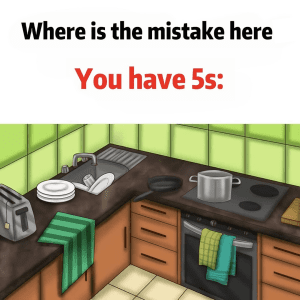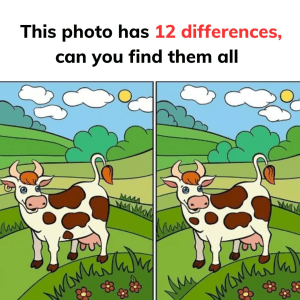Puzzles are a fantastic way to sharpen your mind, enhance critical thinking, and boost problem-solving abilities. While some puzzles may appear simple at first glance, they often hide more complexity than you expect. Today, we’re tackling a challenge that plays on exactly this: a small grid that equals 5. But the real question is, what does the larger grid represent? Get ready to dive into a mind-bending puzzle that will have you counting, analyzing, and thinking outside the box!

Spotting Patterns: The Key to Puzzle Solving
Before jumping to conclusions, take a moment to observe the pattern. It’s easy to fall into a trap by focusing only on the obvious, but there’s often more beneath the surface. With puzzles like this, a couple of common mistakes can derail your progress:
- Miscounting Elements: We often count the most visible parts of a puzzle and overlook the hidden components.
- Overcomplicating the Solution: Sometimes, we assume the answer has to be complex, when a simple approach might work just fine.
Let’s break this puzzle down together, step by step.
Understanding the First Grid: Why Does 2×2 Equal 5?
At first glance, the 2×2 grid seems to have just four squares. So, why does it equal 5? The trick is realizing that there’s more to the grid than just the small squares. Here’s how it works:
- Four Small Squares: The grid contains four individual 1×1 squares.
- One Large Square: The entire 2×2 grid itself forms one large square.
When you count all possible squares (both small and large), you end up with 5 total squares: four small squares and one big square.
Breaking Down the Larger Grid: What Does It Equal?
Now that we understand the first grid, let’s apply the same logic to the larger grid. This time, we’re working with a 3×3 grid. So, how many squares are hidden within it? Let’s count:
- Nine Small Squares (1×1): The 3×3 grid contains nine small squares.
- Four Medium Squares (2×2): Next, you can form four 2×2 squares by combining groups of four smaller squares.
- One Large Square (3×3): Finally, the entire grid itself forms one large 3×3 square.
When you add these all together, you get a total of 14 squares: nine small 1×1 squares, four 2×2 squares, and one large 3×3 square.
The Final Answer: 14
So, what does the larger grid represent? The answer is 14. By breaking the grid down into smaller components and recognizing the hidden squares, we can see that the puzzle is all about counting every possible square within the grid.
Puzzles, like the grid challenge we solved today, offer a fun yet effective way to enhance your problem-solving and critical thinking skills. By breaking down complex problems into smaller parts, recognizing hidden patterns, and avoiding common pitfalls, you can solve even the most confusing challenges with ease. The next time you face a tricky puzzle, remember to stay patient, keep it simple, and trust in your ability to find the solution.


